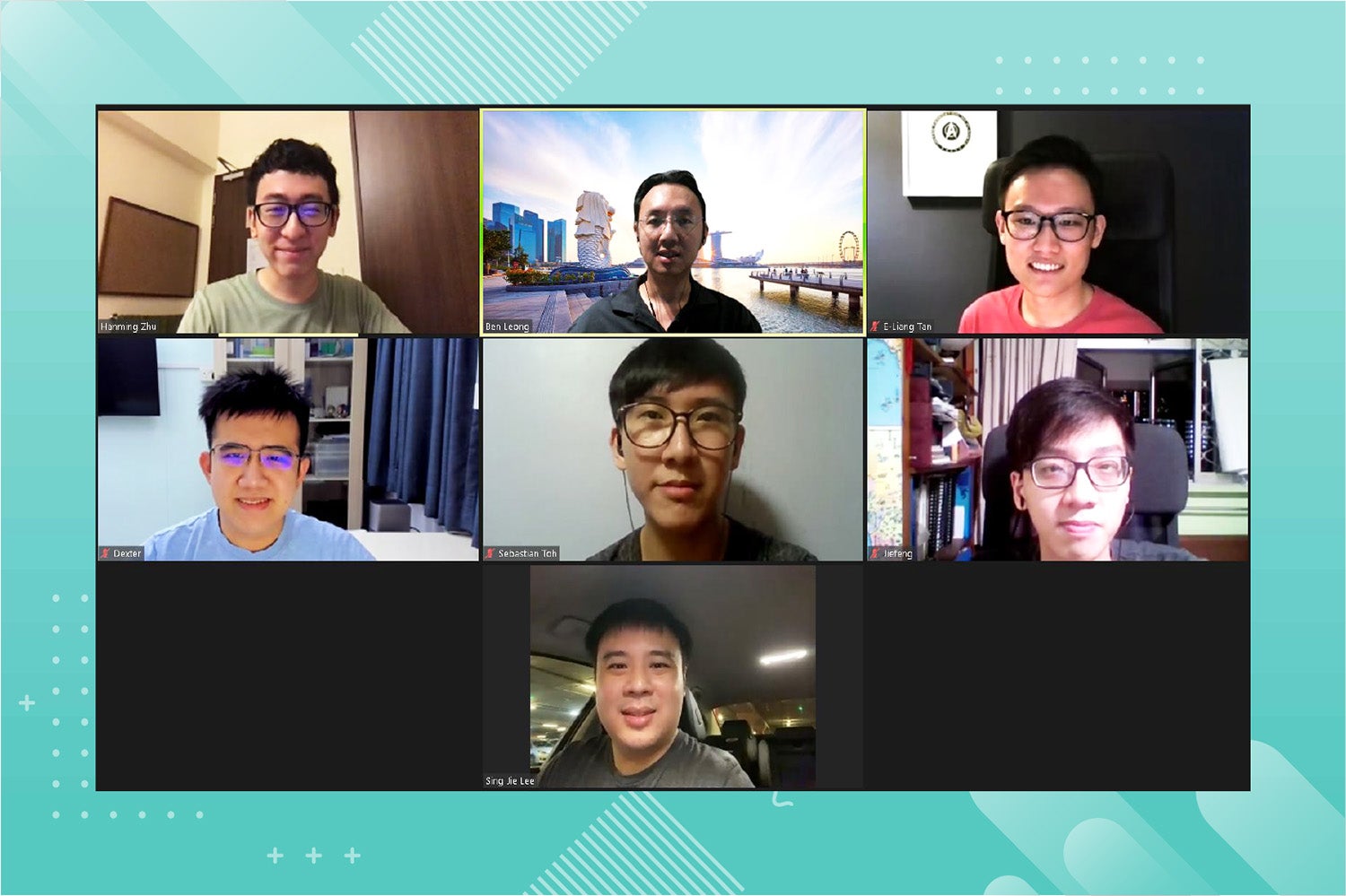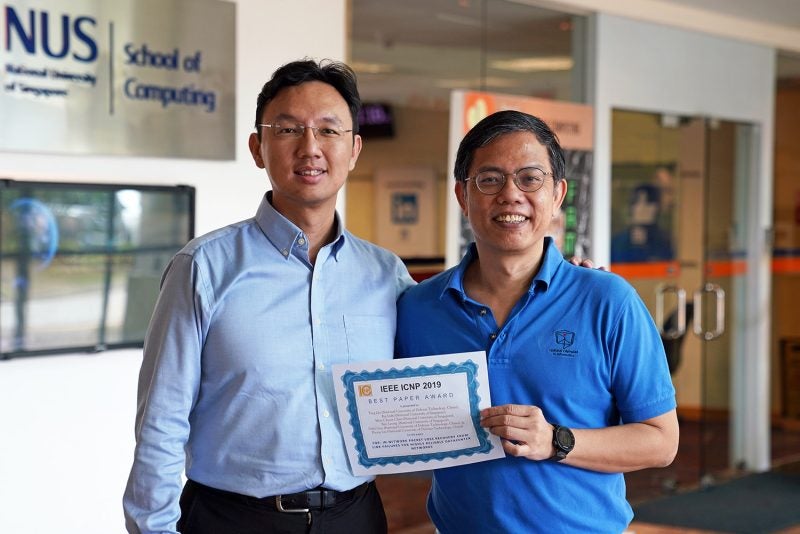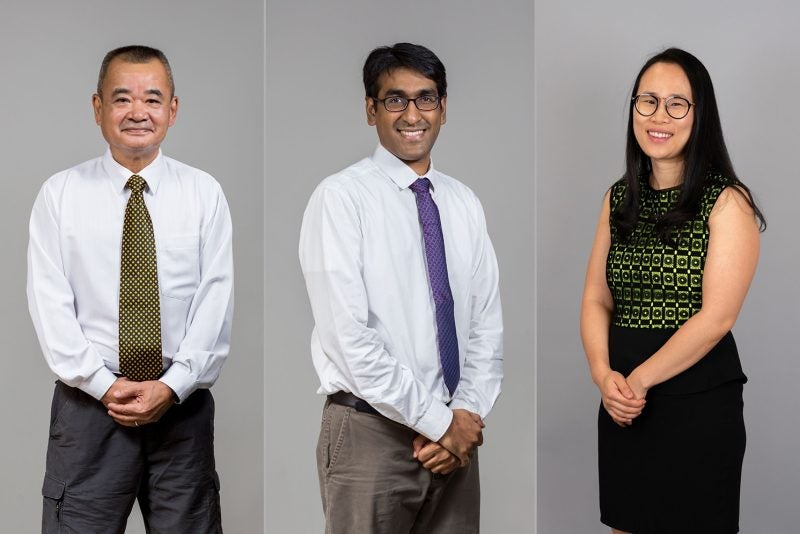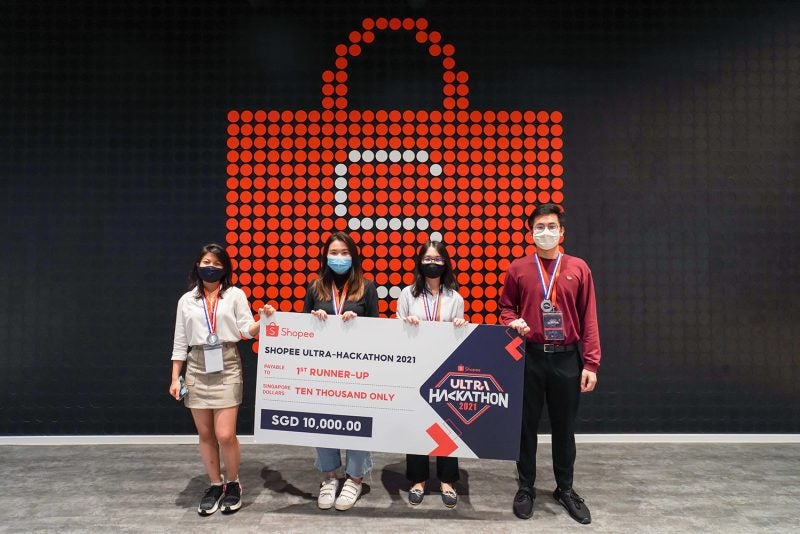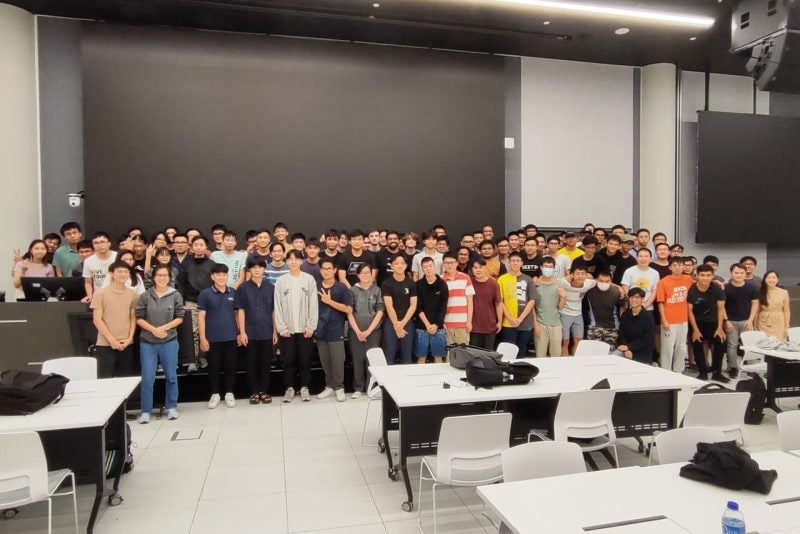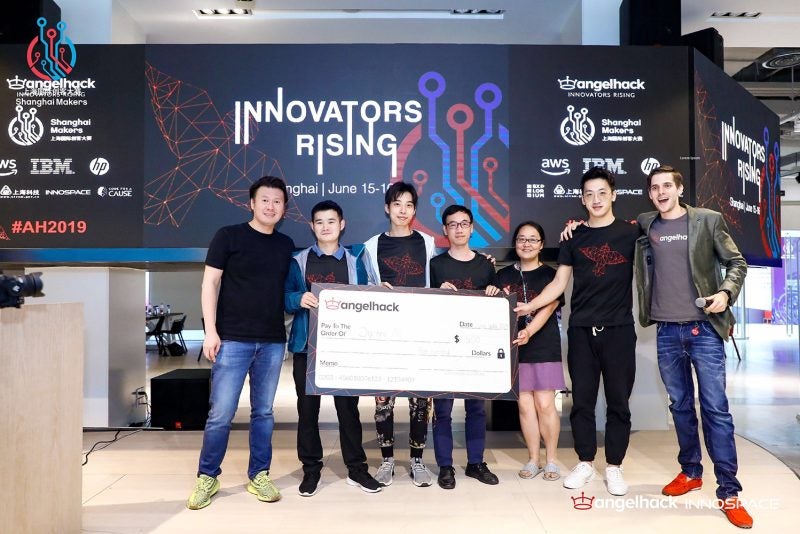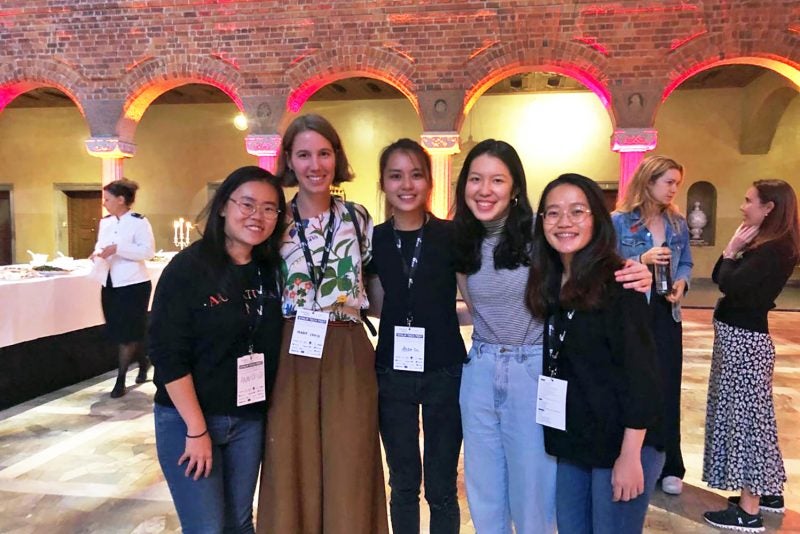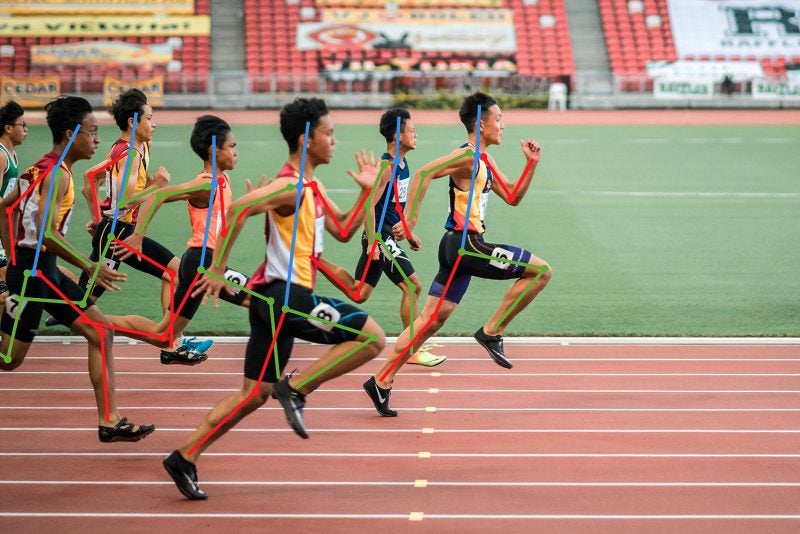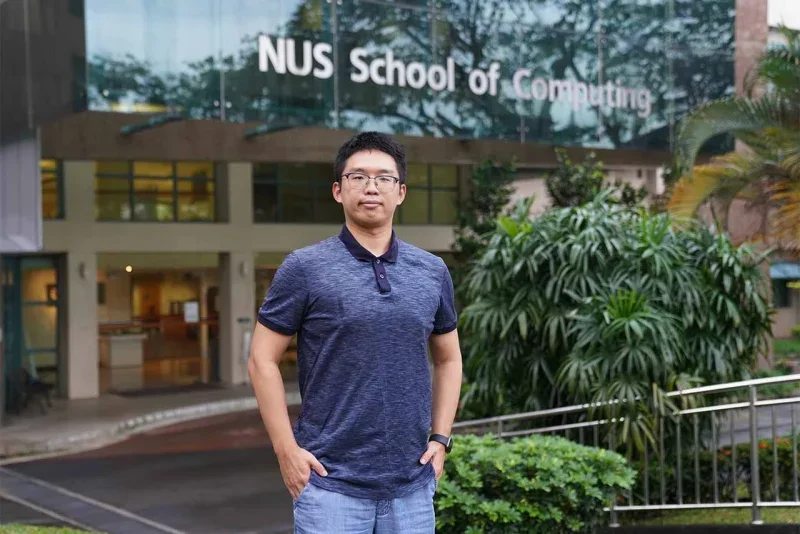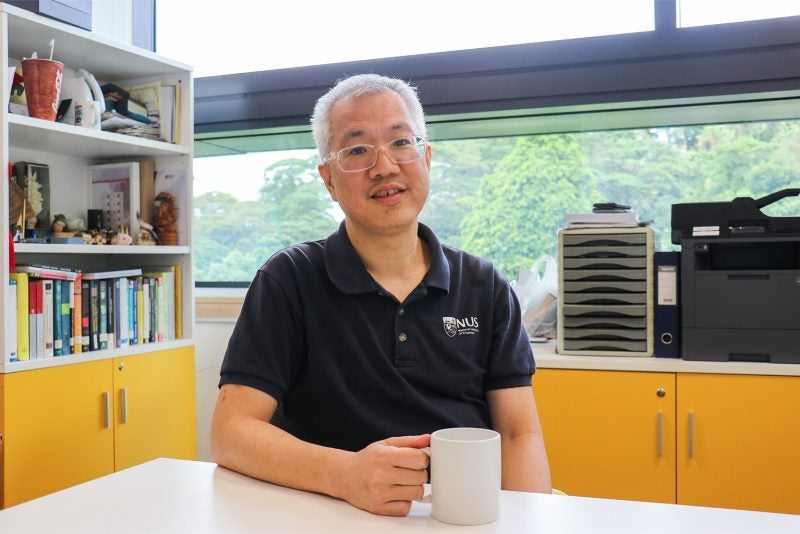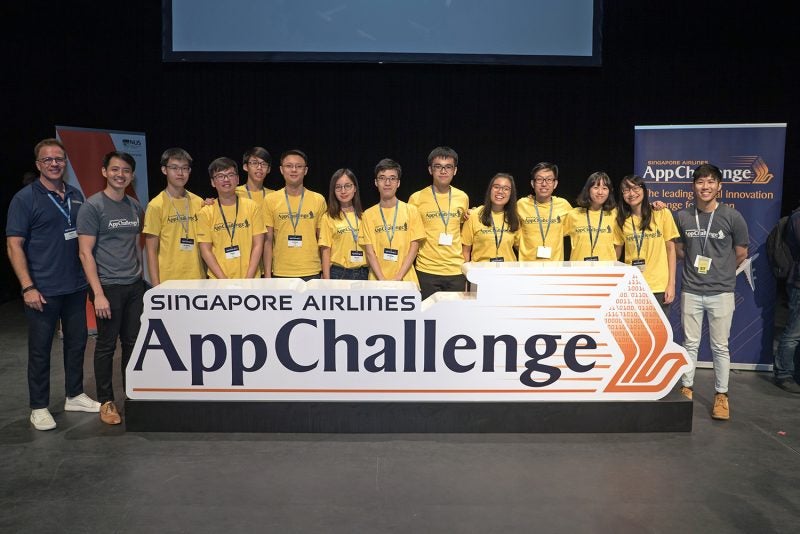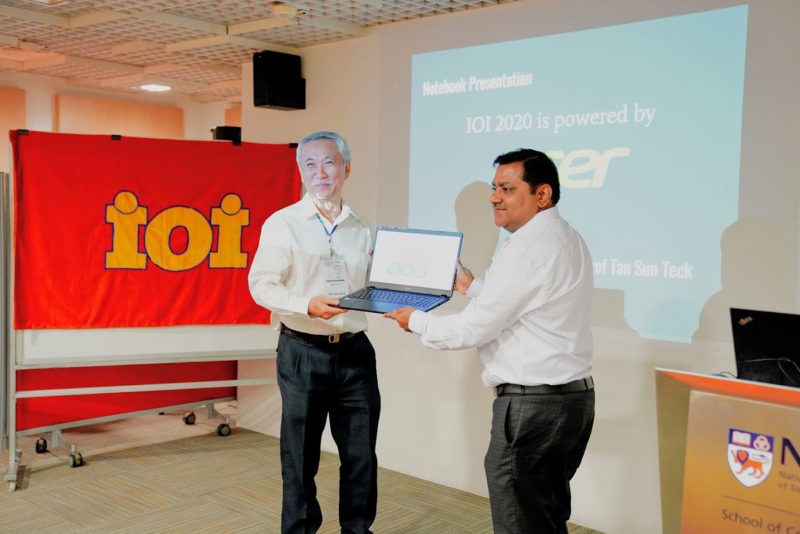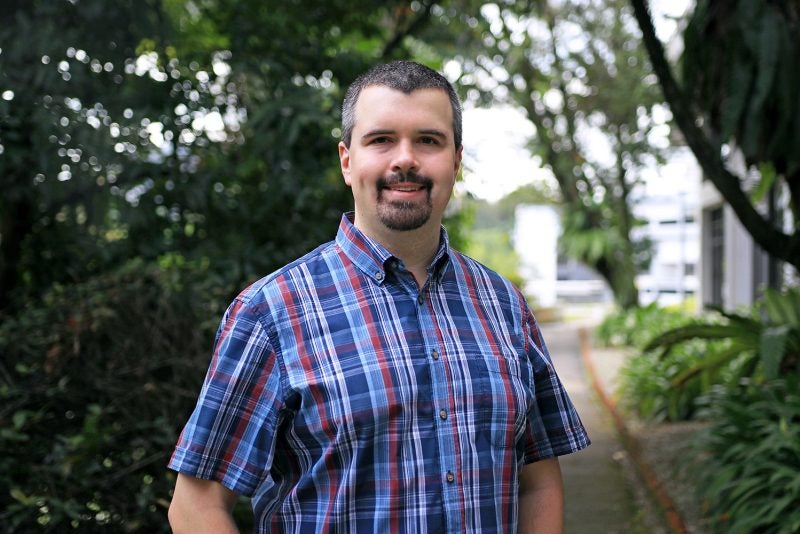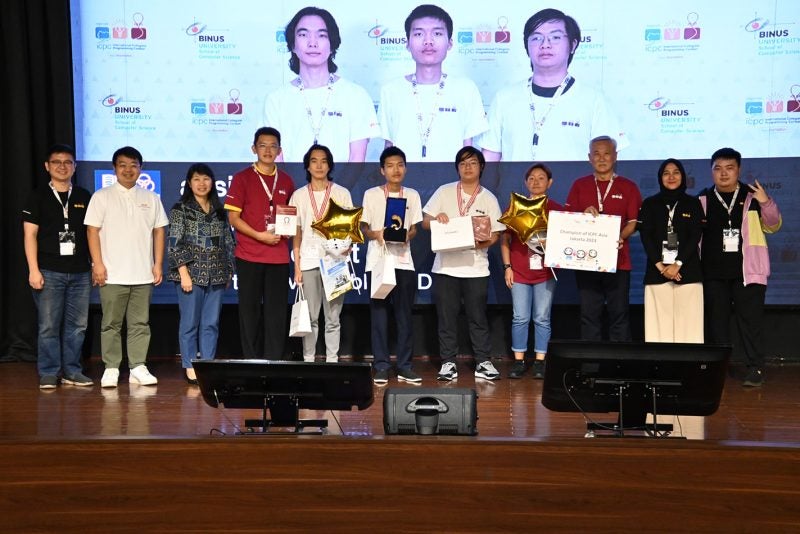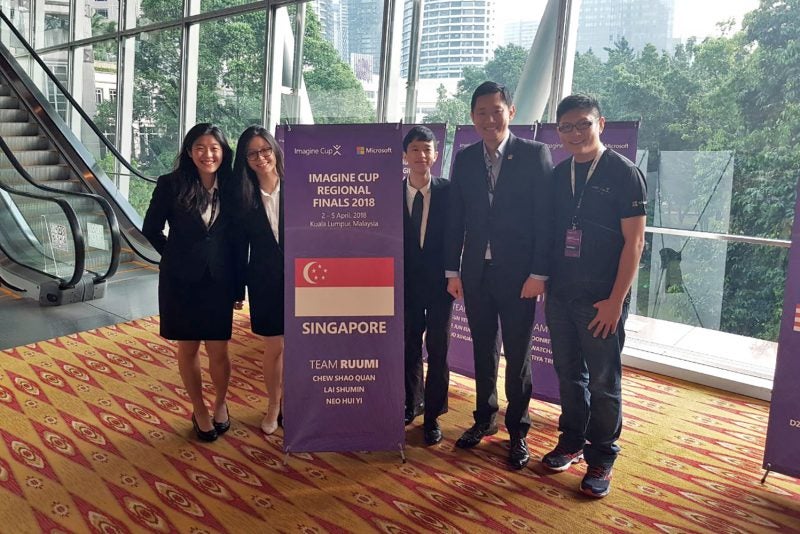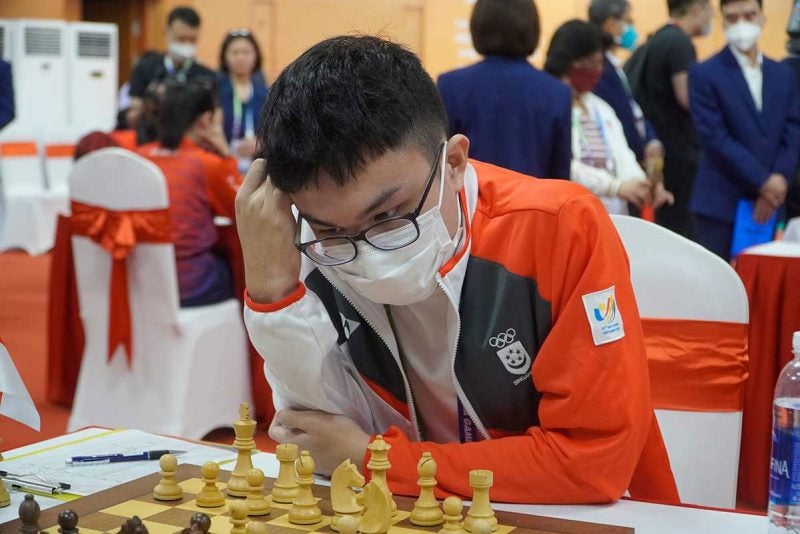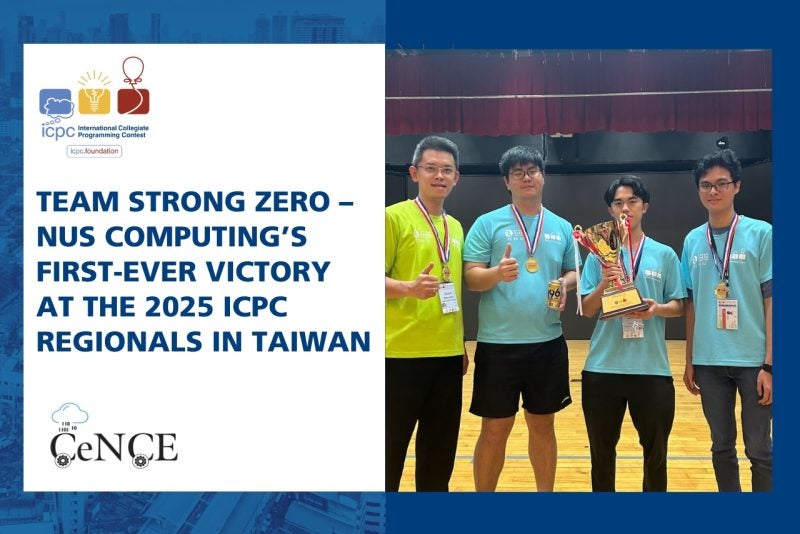27 August 2020 – Six former and current NUS Computing students, along with NUS Computing Associate Professor Ben Leong, developed a fully operational national contact tracing workflow management web application with the Singapore Armed Forces (SAF), in 3 months.
The web application was created in response to the demands posed by the COVID-19 pandemic, which triggered a large volume of contact tracing work that threatened to overwhelm contact tracers.
In early August, the Commander of the SAF’s 6th Division, Brigadier-General Lee Yi-Jin presented a plaque to NUS Computing in appreciation of the team’s swift response and contribution to the nation’s efforts in managing the COVID-19 pandemic. A/P Leong accepted the plaque on behalf of the school.
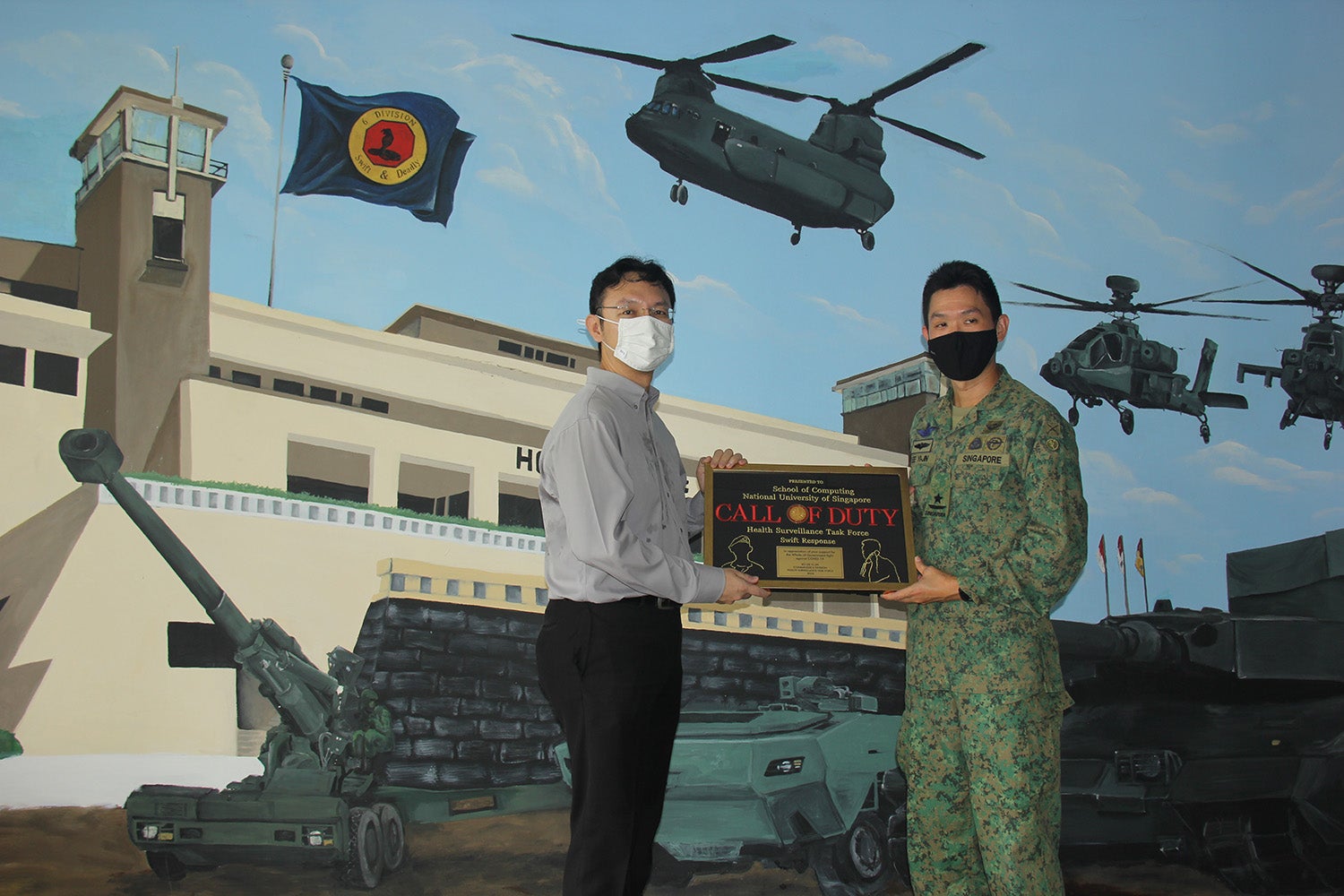
Initially, contact tracing was done manually using Microsoft Excel spreadsheets. However, given the large number of cases and the many contract tracing centres involved, there was a need to improve the workflow with a customised system.
A team comprising of members from the SAF, the Republic of Singapore Air Force (RSAF), and the Defence Science and Technology Agency (DSTA) started work on building an “activity mapping interface” to help contact tracers with their work.
However, the team soon realised they needed help to complete the system in time for safe resumption of activities after circuit breaker measures ended in Phase 1. The SAF then sought the help of A/P Leong in early May to assist in the application’s software development efforts.
Rising to the challenge
A/P Leong assembled a team of five Computer Science (CS) undergraduates, four of whom were then first-year students, to build and deploy the application.
The team consisted of (then first and third-year undergraduates) Zhu Hanming (CS Year 1), Sebastian Toh Shi Jian (CS Year 1), Dexter Tan Ying Jie (CS Year 1), Low Jie Feng (CS Year 1), and Tan E-Liang (CS Year 3).
With the team largely composed of talented but “inexperienced” first year undergraduates, A/P Leong also recruited the help of Lee Sing Jie, an NUS Computer Engineering alumnus and Senior Software Engineer at Facebook, to lead the team during the first few weeks of the project.
Sing Jie, who was on paternity leave, readily agreed to sacrifice the last three weeks of his leave to lead the development of the application. They took over the software development work from the SAF, RSAF and DSTA, who then focused on product management, system deployment, and integration of the application.
The NUS team started on 14 May 2020, and worked tirelessly for two and a half weeks to get the application ready for deployment in Phase 1, which started on 2 June 2020.
The team immediately began building core features such as access control and case routing, explained Hanming, who spoke on behalf of the team. They also came up with different interface designs, for which they sought feedback from users and stakeholders, and subsequently made key design decisions that would affect how the application was built.
“When we were first developing the system, our focus was not really ‘whether we could do it’, but more of ‘we had to do it’. Everyone in the team put in their utmost effort and pushed themselves,” said Hanming, who assumed the role of team leader after Sing Jie successfully oversaw the initial deployment of the application and took his leave.
The team also worked closely with the SAF, RSAF and DSTA personnel in building the application. “As they oversaw the usage of the application on the ground, they provided timely feedback from the users, and our team worked to build the app based on these feedback and requirements,” added Hanming.
What they came up with in under three weeks, including “many sleepless nights”, was an integrated and seamless platform for contact tracing, which enabled the local authorities to track and contain the spread of COVID-19 more effectively. The application was officially launched and operational on 1 June.
No room for failure
Adopting an “ops-first mentality”, the team’s first key consideration was that the app could not fail under any circumstances, “or else all forward contact tracing operations in Singapore, which takes place every day, even on weekends, would be disrupted”.
The second consideration was to place user experience as priority, in order to cater to the wide age range and the varying levels of tech savviness of the contact tracers.
To effectively stem the virus’s spread, swift and accurate contact tracing is required. In order to help contact tracers do their job quickly and accurately, the web application is fully integrated with many data sources, such as the TraceTogether app, the SafeEntry digital check-in system, as well as a person’s recent travel history and other official data.
Other supporting features on the web application include a visual map that displays a geospatial representation of the contact tracer’s work, and an extensive dashboard that displays a breakdown of cases at any one time. This allows important decisions to be made quickly, and supports the daily reporting of numbers in press releases and for tracking purposes.
“Now that we’re looking back on this, it is indeed quite surprising that we managed to pull this off,” added Hanming, who described the entire journey as long and tiring, but rewarding. “Not only were we learning new skills, we were also helping our nation battle COVID-19. The various application features that we spent days designing and building helped our country respond faster and to be more resilient.”
Citing the new technology stack that they had to get used to, as well as the rapidly changing requirements needed to meet the demands of ground operations, Hanming said that the team mostly “had to learn everything from scratch”.
“Sing Jie’s experience and expertise really helped us pull through this period, as it was under his lead that the rest of the team managed to get a good flow going and developed a working application within two and a half weeks,” said Hanming.
The web application is now fully operational, and the NUS team’s involvement with the project ended in early August this year, when the system was officially handed over to the Ministry of Health.
“We would like to extend our sincerest gratitude to individuals from the SAF, RSAF and DSTA for their support throughout the development of the app,” added Hanming.
The NUS Computing students completed this project under the ambit of Computing for Voluntary Welfare Organisations (CVWO), an initiative by A/P Leong. Students are provided with subsistence stipends to do community projects each summer, and the initiative is fully sponsored by the Government of Singapore Investment Corporation (GIC).

